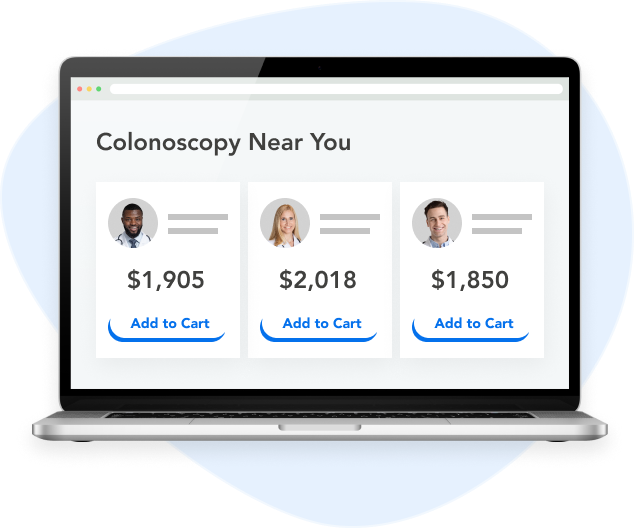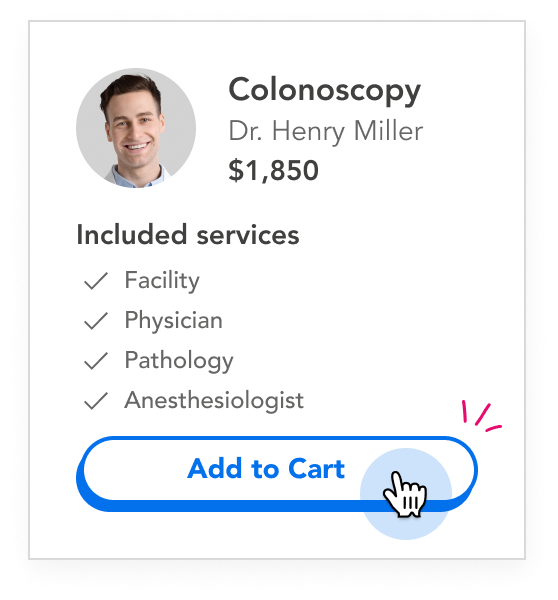
2D Mammogram Diagnostic Unilateral (1 breast)
(74) Reviews from people who purchased this procedureESTIMATED
NATIONAL AVERAGE
MDSAVE
NATIONAL AVERAGE
Diagnostic Mammogram is used to check for breast cancer after a lump or other sign or symptom of the disease has been found. This test includes the examination of ONE Breast. It also includes computer-aided detection (CAD) of lesions obtained during the mammogram.
How Much Does a 2D Mammogram Diagnostic Unilateral (1 breast) Cost?
Purchase a 2D Mammogram Diagnostic Unilateral (1 breast) today on MDsave. Costs range from $166 to $448. Those on high deductible health plans or without insurance can save when they buy their procedure upfront through MDsave. Read more about how MDsave works.Find 2D Mammogram Diagnostic Unilateral (1 breast) providers near you
Search board-certified providers, compare prices, buy online, and save money.
What Our Customers Say
Browse 772 Providers in these Locations
Choose your location to find 2D Mammogram Diagnostic Unilateral (1 breast) providers near you.
Shop with
Peace of Mind
Financing options
Promotional financing available when you pay with CareCredit. What is CareCredit?
MONEY BACK GUARANTEE
We will refund your payment in full if you end up not needing your purchased procedure and do not receive care. Details

Procedure Details
What is a Unilateral Diagnostic Mammogram?
A mammogram is an x-ray of the breast used to find tumors or tiny calcium deposits (microcalcifications) that may indicate the presence of breast cancer. Mammography uses special x-ray equipment to hold and compress the breast during imaging, which allows for a sharper picture and lower dose of radiation than standard x-rays. Diagnostic mammograms are used to investigate abnormalities in the breast that may be symptoms of breast cancer. Often, a diagnostic mammogram is a follow-up exam ordered if a screening mammogram detects something out of the ordinary. Diagnostic mammograms may also be used after a lump or other potential sign of breast cancer is felt or found during a breast exam, or in women with a history of breast cancer (particularly those who have had a lumpectomy or recent mastectomy). There are two types of diagnostic mammogram – unilateral and bilateral. Unilateral diagnostic mammograms examine only one breast, whereas bilateral mammograms take images of both breasts.
Why are Unilateral Diagnostic Mammograms Used?
Women who have had cancer in one breast are at increased risk of cancer recurring in the other. This is one very important reason why unilateral diagnostic mammograms are used to check for cancer in women who have had a mastectomy for a prior breast cancer. While it is typically not considered necessary to do mammograms on post-mastectomy or reconstructed breasts, unilateral mammograms are recommended yearly for the unaffected breast. Yearly mammograms are also recommended for women who have had a breast cancer surgery called subcutaneous (or skin-sparing) mastectomy, in which the nipple and tissue just beneath the skin is left intact. If you have had any kind of mastectomy, it is important to check with your doctor to find out what kind of mammograms you may need. Unilateral diagnostic mammograms may also be ordered if an abnormality is found in only one breast during a regular screening mammogram. In these cases, the unilateral mammogram is often used as a six-month follow-up exam between yearly mammograms, where the unilateral image is compared to the bilateral baseline image to check for symmetry or any changes in the tissue.
What is the Difference between Screening and Diagnostic Mammograms?
Screening mammograms are preventive procedures used to check for signs of breast cancer in women who do not have any cancer symptoms. Diagnostic mammograms are used to help diagnose breast cancer when a lump or other symptom has been found. Screening mammograms are performed with a technician present, and usually involve only two images per breast. Diagnostic mammograms are performed with a radiologist and a technician present, and are often combined with an ultrasound. More images are typically taken in a diagnostic mammogram.
Who Should Get a Unilateral Diagnostic Mammogram?
Any woman who has found any symptoms of breast cancer, either through a breast exam or a mammogram, should speak with a doctor about a diagnostic mammogram. Unilateral diagnostic mammograms are also recommended for women who have been treated for breast cancer with breast-conserving surgery (also known as partial mastectomy or lumpectomy), often as a follow-up six months after radiation treatment is finished. This mammogram becomes a new baseline for that breast, and is used to monitor healing and check for recurring cancers. Women who have had a mastectomy should have a yearly unilateral diagnostic mammogram in the unaffected breast. Talk to your doctor if you are unsure what kind of mammogram you should be having.
What Can You Expect During a Unilateral Diagnostic Mammogram?
During your mammogram, you will need to undress from the waist up, but the facility will provide you with a wrap to wear. You will be in the room with a technologist, who will help you position your breast on the x-ray plate. A radiologist will also be present during your mammogram, and may request special images, called spot views or magnification views, to better evaluate any unusual or suspicious areas. In order to get the best possible image, your breast will need to be compressed in the machine. This may be uncomfortable, but each compression should only last for a few seconds, and the whole screening should only last about 20 minutes. If needed, an ultrasound may accompany your diagnostic mammogram. After your mammogram, your facility is required to send you a summary of your results within 30 days.
What does a Unilateral Diagnostic Mammogram Cost?
The cost of diagnostic mammograms can vary dramatically based on insurance plan, the region and facility in which the mammogram is performed, and the type of imaging needed to make a diagnosis. A 2005 study found that among women receiving mammograms, women who needed diagnostic mammograms tended to spend more than twice as much as those who only needed screenings, due to higher imaging costs and the costs of consultation and possible intervention. The out-of-pocket cost of a diagnostic screening today can run from the $100s into the $400s or more. We believe that it should be easy and affordable to get the diagnostic imaging you need. MDsave takes the mystery out of mammogram costs by negotiating bundled, discounted rates that you pay one time, up front, with no surprises. Our negotiated rates can save you more than half off the average cost of a diagnostic mammogram, and our bundled price means that imaging, consultation, and facility costs are already included. Just point, click, and pay. Need to find an affordable diagnostic mammogram near you? Enter your ZIP code or check our map.
Patient Reviews
5.0
What did you like most about using MDsave?
It had the information about my procedure
What could we do to improve?
N/A
What did you like most about using MDsave?
The easiness of navigation and great prices
What could we do to improve?
Nothing! Saving me $1000 was enough!!
What did you like most about using MDsave?
Savings and ease of use
What could we do to improve?
So far, nothing. Service and customer service is great.
What did you like most about using MDsave?
the hospital was aware of it and helped
What could we do to improve?
make the price as low as possible and add pay out methods.
What did you like most about using MDsave?
Knowing my total cost in advance.
What could we do to improve?
I could have brought/requested 2 yrs previous mammograms to expedite the final radiologist report. I haven’t received results yet.
Get Care In Three Easy Steps
Compare Upfront Prices

Search by procedure and location to browse local providers and compare upfront pricing.
Buy Your Procedure

Pay for your procedure online or by calling (844) 256-7696. Or buy your procedure at the facility before your appointment is scheduled.
Receive Your Care

Follow the scheduling instructions given by your provider. Bring your voucher to your appointment.
Procedures
© Copyright 2025 MDsave Incorporated.
All Rights Reserved.